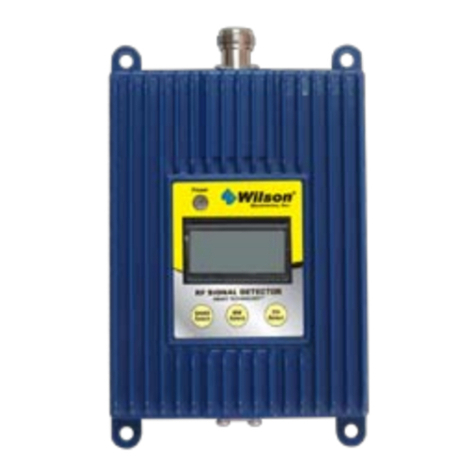
4
SM-158
OPERATION(CONT’)
5. Seal the tube to be tested by pressing the rubber coated nozzle of the VLD
into the near end of the tube.
6. Release compressed air to the VLD by depressing the VLD lever trigger.
The tube under test will evacuate rapidly for a few seconds, as registered
by the vacuum gage (Key 17) and at a slower rate as the vacuum continues
to build up.
7. At some convenient gage reading, seal the evacuated tube by releasing the
VLD trigger.
8. Observe the gage for a few seconds. A steady gage indicates a satisfactory
tube. A falling vacuum indicates a leaky tube.
9. Test each tube in turn, repeating steps 5 through 8 above. NOTE: Before
replacing a tube indicated faulty, it is a good idea to repeat the test, first
checking the seals at the tube plug seat and at the VLD nozzle.
5
SM-158
DISASSEMBLY
MUFFLER - A clogged muffler (Key 116) will limit the VLD vacuum to less than
the 19 to 25 inches of mercury. To check the muffler, compare the VLD vacuums
produced with and without the muffler. If the difference between the vacuums ex-
ceeds 3 inches of mercury, a clogged muffler is indicated, Unthread the muffler
from the VLD. Flush and blow dry with clean, dry compressed air. Rethread the
muffler to the VLD assembly. Frequent necessity to clean the muffler usually indi-
cates unclean compressed air and/or unclean tubes under test. In these cases an air
line filter is recommended for the compressed air line. As necessary, this filtered air
should be used to blow tubes under test clean of liquids or other debris.
VENTURI - A clogged venturi chamber will limit the VLD vacuum. To inspect the
venturi chamber, unthread Muffler and Jet Sleeve (Key 16 & 15). Unthread check
valve (Key 4). Reach into the Insert (Key 11) from the muffler side and carefully
press jet needle (Key 10) out of the assembly. Inspect jet needle; rinse clean as nec-
essary. Wipe jet needle seat with a clean rag and blow out with clean, dry com-
pressed air. Reassemble. (The jet needle is essential in formation of the vacuum and
is manufactured to exacting requirements. Handle with care.)
VACUUM GAGE INLET - Unsatisfactory vacuum gage (Key 17) readings may be
due to a clogged gage inlet. Unthread Check Valve (Key 4). This will reveal a
small gage inlet port in the Check Valve. Be sure this port is clear. Reassemble.
CHECK VALVE DISC - When compressed air is shut off, the VLD check valve
(Key 4) automatically closes, sealing the evacuated tube. Had the Check Valve
Disc (Key 8) become clogged with debris prior to shut off, it will not seal and the
tube under test will fill with air incorrectly indicating a leaky tube. To correct this
condition, unthread the VLD check valve. Remove retainer (Key 9). Remove and
wipe the check valve disc clean. Flush and air dry the disc valve seat. Reassemble.


























